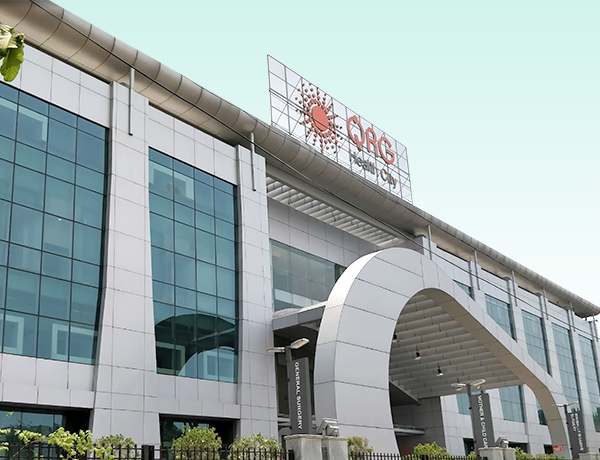Pulmonary Embolism
A pulmonary embolism (PE) is a blood clot in the blood vessels of your lung. This happens when a clot in another part of your body (often your leg or arm) moves through the veins to your lung. A PE restricts blood flow to your lungs, lowers oxygen levels in your lungs and increases blood pressure in your pulmonary arteries. Without quick treatment, a pulmonary embolism can cause heart or lung damage and even death.

Who Needs Pulmonary Embolism
Anyone can be at risk for pulmonary embolism, but certain factors increase the likelihood, including a history of DVT, recent surgery, prolonged immobility (bed rest, long flights), cancer, obesity, smoking, hormonal contraceptives, and inherited blood clotting disorders. People with these risk factors should be especially vigilant about PE symptoms.
When to See a Specialist
If you experience sudden shortness of breath, chest pain that worsens with deep breaths, rapid heartbeat, coughing up blood, or fainting, seek immediate medical attention. These symptoms may indicate pulmonary embolism and require urgent evaluation.
Procedure
- Diagnosis: The specialist evaluates the patient’s medical history, performs a physical examination, and orders diagnostic tests such as a CT pulmonary angiogram (CTPA), ventilation-perfusion (V/Q) scan, and blood tests (D-dimer) to confirm the diagnosis.
- Anticoagulant Therapy: Immediate treatment usually involves anticoagulant medications (blood thinners) to prevent further clot formation and allow the body’s natural mechanisms to dissolve existing clots.
- Thrombolytic Therapy: In severe cases where the clot is large and life-threatening, thrombolytic drugs may be administered to rapidly dissolve the clot.
- Embolectomy: In rare cases, surgical or minimally invasive procedures may be necessary to remove the clot from the pulmonary arteries.
Road to Recovery
Patients with PE are closely monitored and may need to take anticoagulant medications for a specific duration. Gradual recovery involves managing symptoms, avoiding risk factors, and following a healthcare provider’s recommendations.
Risk Management
Preventing pulmonary embolism involves managing risk factors such as staying physically active, avoiding prolonged immobility, maintaining a healthy weight, managing chronic conditions, and taking appropriate precautions during travel.
Benefits of Pulmonary Embolism
- Life-Saving Treatment: Prompt diagnosis and treatment of PE can prevent severe complications and save lives.
- Symptom Relief: Treatment helps alleviate symptoms like shortness of breath and chest pain, improving overall quality of life.
- Reduced Recurrence: Anticoagulant therapy reduces the risk of recurrent clots and further complications.
Frequently Asked Questions
1. Can pulmonary embolism be prevented?
Some preventive measures include staying active, avoiding long periods of immobility, and taking prescribed blood thinners if at risk.
2. Are there long-term effects of pulmonary embolism?
In some cases, PE can lead to long-term complications like chronic thromboembolic pulmonary hypertension (CTEPH), which requires ongoing management.
3. Can PE recur?
Yes, PE can recur. Managing risk factors, taking prescribed medications, and following your doctor’s advice can help reduce the risk of recurrence.
4. Are there lifestyle changes I should make after having PE?
Yes, maintaining a healthy lifestyle, staying active, and adhering to prescribed medications are crucial to preventing future PE episodes.
5. How long will I need to take blood thinners after a pulmonary embolism?
The duration of anticoagulant therapy varies based on individual factors and the underlying cause of the clot. Your healthcare provider will determine the appropriate duration for your situation.
Treatment Plans
- Trauma & intensive care $59
- Aged Care $29
- Community Services $25
- Diagnosis & Investigation $48
- Medical & Surgical $82
- Mental Health $74
- Rehabitation $24
- Specialised Support Service $19
- Trauma & intensive care $59
- Aged Care $29
- Community Services $25
- Diagnosis & Investigation $48
- Medical & Surgical $82
- Mental Health $74
- Rehabitation $24
- Specialised Support Service $19
Treatians As The Best Choice
Treatians understand that seeking medical treatment abroad can be a daunting experience for patients and their families. That’s why the company offers end-to-end support to its clients, from the initial consultation to post-treatment care. The company provides personalized treatment plans that are tailored to meet the individual needs of each patient, and its team of dedicated professionals is always on hand to provide guidance and support throughout the entire process. Contact us at +91-7982312582, drop your email [email protected]
- Trauma & intensive care
- Aged Care
- Community Services
- Diagnosis & Investigation
- Medical & Surgical
- Mental Health
- Rehabitation
- Specialised Support Service
Service Recipient Says

Oxmox advised her not to do so, because there were thousands of bad Commas, wild Question Marks and devious.
Kolis Muller NY Citizen
Oxmox advised her not to do so, because there were thousands of bad Commas, wild Question Marks and devious.
Kolis Muller NY Citizen


















Oxmox advised her not to do so, because there were thousands of bad Commas, wild Question Marks and devious.
Kolis Muller NY Citizen